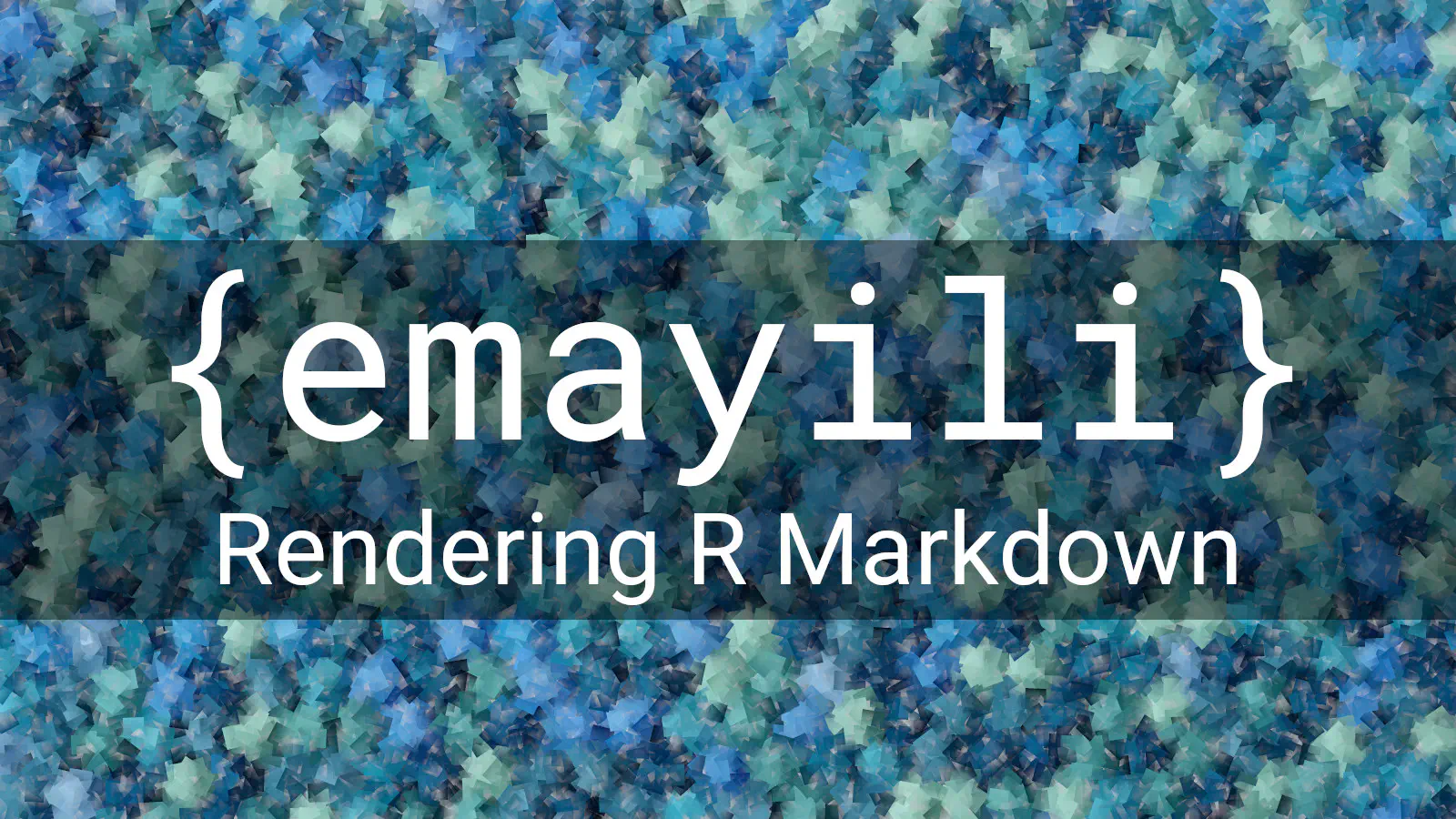
In a previous post I documented a new feature in {emayili}, the ability to render Plain Markdown directly into the body of an email message.
Today I’m announcing the release of a new minor version, 0.5.0, in which {emayili} is now able to render R Markdown into an email. This is a major leap forward for the package.
I should mention that this capability (rendering R Markdown into an email) is already available in the {mailmerge} package, but that only works with Gmail. Also, this post shows how something similar can be done with the {blastula} package, but IMHO the implementation in {emayili} is a lot simpler.
Install & Load
You can install this version directly from GitHub as follows.
remotes::install_github("datawookie/emayili", ref = "v0.5.0")
This version was also published on CRAN on 17 September 2021.
Now load the package.
library(emayili)
# A couple of options to display message body.
#
options(
envelope.details = TRUE,
envelope.invisible = FALSE
)
Check on the installed version.
packageVersion("emayili")
[1] '0.5.0'
A Simple R Markdown File
For the purposes of illustration let’s use a super simple R Markdown file, pi.Rmd.
---
title: "Approximating Pi"
output: html_document
---
```r
22 / 7
```
Create an empty message object.
msg <- envelope()
And then render pi.Rmd into the body of the message. In this case I’m going to set the include_css option to FALSE so that the copious volume of CSS is suppressed in the resulting HTML.
msg %>% render("pi.Rmd", include_css = FALSE)
Date: Sat, 12 Feb 2022 07:56:36 GMT
X-Mailer: {emayili}-0.7.5
MIME-Version: 1.0
Content-Type: text/html;
charset=utf-8
Content-Disposition: inline
<html>
<head>
<title>Approximating Pi</title>
</head>
<body>
<div class="container-fluid main-container">
<div id="header">
<h1 class="title toc-ignore">Approximating Pi</h1>
</div>
<pre class="r"><code>22 / 7</code></pre>
<pre><code>[1] 3.142857</code></pre>
</div>
</body>
</html>
The document is inserted with MIME type text/html.
Let’s move onto a more interesting example.
R Markdown File from Template
Create an R Markdown file using the "github_document" template.
rmd <- "gh-doc.Rmd"
rmarkdown::draft(
rmd,
template = "github_document",
package = "rmarkdown",
edit = FALSE
)
---
title: "Untitled"
output: github_document
---
```r
knitr::opts_chunk$set(echo = TRUE)
```
## GitHub Documents
This is an R Markdown format used for publishing markdown documents to GitHub.
When you click the **Knit** button all R code chunks are run and a markdown
file (.md) suitable for publishing to GitHub is generated.
## Including Code
You can include R code in the document as follows:
```r
summary(cars)
```
## Including Plots
You can also embed plots, for example:
```r
plot(pressure)
```
Note that the `echo = FALSE` parameter was added to the code chunk to prevent
printing of the R code that generated the plot.
Now we’ll add some addresses to the message object and render the R Markdown.
msg %>%
to("bob@google.com") %>%
from("alice@google.com") %>%
subject("Rendering an R Markdown Document") %>%
render(rmd)
Dispatching the email results in the message below.

The message doesn’t need to look this generic. You can make your R Markdown documents as fancy as you want and {emayili} will be happy to send them.
Conclusion
If you haven’t tried {emayili} before, now is a great time to give it a shot. And if you use R for automated reporting, then being able to render R Markdown directly into an email should simplify your workflow.
I gave a talk about these new features (and most of the old features!) at the Birmingham R User Group. The slides are available here.